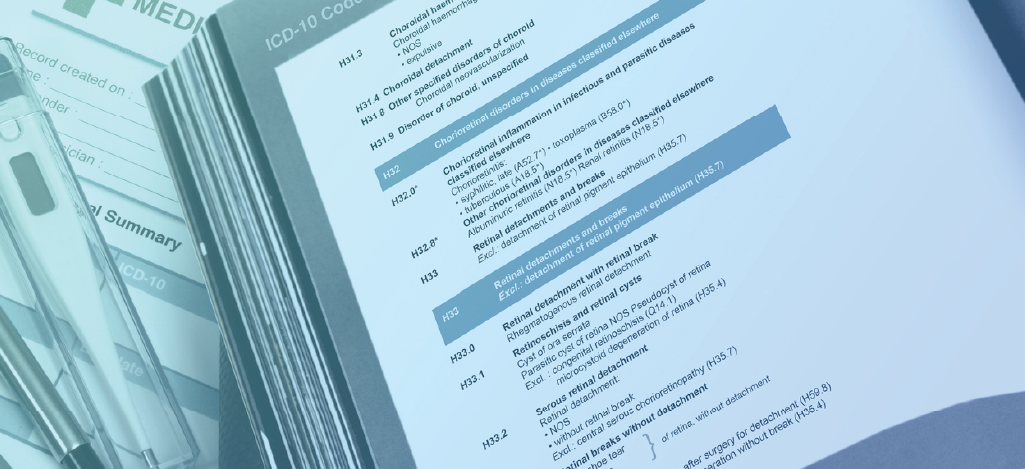Discover the ins and outs of Electronic Data Interchange (EDI) with our comprehensive guide.
Electronic Data Interchange (EDI) is a technology that allows businesses to exchange data electronically in a structured format. It enables the automated transfer of information between different systems, eliminating the need for manual data entry and reducing the chances of errors. In this comprehensive guide, we will explore the various aspects of EDI and its implications for businesses today.
Understanding Electronic Data Interchange (EDI)

Electronic Data Interchange (EDI) is a method of exchanging business documents between trading partners in a standardized electronic format. It allows for the seamless transfer of information such as purchase orders, invoices, shipping notices, and more. By utilizing a common format, such as EDI standards like ANSI X12 or EDIFACT, businesses can communicate effectively with their partners, regardless of the systems they use.
EDI has revolutionized the way businesses operate by providing a fast, efficient, and secure method of exchanging data. It eliminates the need for manual data entry, reduces errors, and enables real-time communication between different entities. This technology has become increasingly important in today's business world, where companies strive to streamline their operations and improve efficiency.
The Basics of EDI
EDI involves the exchange of business documents in a standardized electronic format. This format ensures that the information is structured in a way that can be easily understood and processed by both the sender and the receiver. It eliminates the need for paper-based documents, reducing costs and improving accuracy.
When a company wants to send an EDI document to a trading partner, it first converts the document into the appropriate EDI format. This conversion is done using specialized software or through a third-party service provider. The EDI document is then transmitted electronically to the recipient, who can process it directly into their system without the need for manual intervention.
One of the key advantages of EDI is its ability to facilitate seamless communication between different systems. Regardless of the software or technology used by each trading partner, EDI ensures that the information is exchanged in a format that can be easily understood and processed. This eliminates the need for manual data entry, reducing errors and saving time.
The Importance of EDI in Today's Business World
In today's fast-paced business world, where time is of the essence, EDI plays a vital role in improving efficiency and productivity. By enabling real-time communication between different entities, EDI facilitates faster decision-making and better customer service. For example, when a customer places an order, the EDI system can automatically generate a purchase order and send it directly to the supplier, eliminating the need for manual intervention and reducing the time it takes to process the order.
EDI also improves overall productivity by eliminating manual data entry and reducing errors. With EDI, businesses can automate the exchange of information, allowing employees to focus on more value-added tasks. This not only saves time but also improves accuracy, as the risk of human error is significantly reduced.
Furthermore, EDI enhances supply chain management by providing real-time visibility into the movement of goods. By exchanging shipping notices electronically, businesses can track the progress of their shipments and make informed decisions to optimize their supply chain operations.
In conclusion, EDI is a powerful tool that enables businesses to exchange information seamlessly and efficiently. By utilizing a standardized electronic format, companies can improve communication, streamline operations, and enhance productivity. In today's business world, where speed and accuracy are paramount, EDI has become an indispensable technology for companies of all sizes.
The Technical Aspects of Electronic Data Interchange
Electronic Data Interchange (EDI) is a method of exchanging business documents electronically between different computer systems. It allows companies to seamlessly transmit data, such as purchase orders, invoices, and shipping notices, without the need for manual data entry or paper documents. EDI has become an essential tool for streamlining business processes and improving efficiency in various industries.
How EDI Works: A Simplified Explanation
EDI relies on a set of standardized messages and formats to transmit data between systems. This ensures that the information is structured in a consistent and understandable way for both the sender and the recipient. When a business wants to send an EDI document to a trading partner, it first converts the information into the agreed EDI format. This formatted data is then transmitted electronically, typically through a secure network connection.
Upon receiving the data, the recipient's system decodes the EDI document and processes the information accordingly. This involves extracting the relevant data fields and mapping them to the recipient's internal systems. For example, if an EDI document contains a purchase order, the recipient's system will extract the order details, such as the item codes, quantities, and delivery addresses, and automatically update their inventory and order management systems.
EDI also supports various communication protocols, such as AS2 (Applicability Statement 2) and FTP (File Transfer Protocol), to ensure secure and reliable data transmission. These protocols encrypt the data during transit, protecting it from unauthorized access or tampering. Additionally, EDI systems often incorporate error-checking mechanisms to validate the integrity and accuracy of the transmitted data, reducing the risk of data discrepancies and errors.
Common EDI Standards and Formats
There are several widely-used EDI standards and formats, each serving specific industries or regions. ANSI X12 is prevalent in North America and is widely adopted by companies in sectors such as retail, healthcare, and transportation. It defines a standardized structure for various business documents, including purchase orders, invoices, and shipping notices.
On the other hand, EDIFACT (Electronic Data Interchange for Administration, Commerce, and Transport) is more commonly utilized in Europe and other international markets. It is a global standard developed by the United Nations and is widely used in industries such as automotive, logistics, and manufacturing. EDIFACT provides a comprehensive set of message types and data elements that enable seamless communication between trading partners across different countries and industries.
In addition to ANSI X12 and EDIFACT, there are industry-specific standards like Tradacoms and SWIFT. Tradacoms, developed by the UK retail industry, focuses on electronic data interchange for retail and distribution sectors. It defines message formats and data elements specific to these industries, allowing for efficient exchange of information related to product catalogs, orders, and invoices.
SWIFT (Society for Worldwide Interbank Financial Telecommunication) is a messaging standard widely used in the financial industry for secure and standardized communication between banks and financial institutions. It enables the exchange of financial messages, such as payment instructions, securities trade confirmations, and foreign exchange transactions, in a standardized format, ensuring accuracy and reliability in financial transactions.
Overall, the choice of EDI standard and format depends on the specific requirements and industry practices of the trading partners involved. By adhering to these standards, businesses can ensure seamless integration with their trading partners' systems, enabling efficient and error-free exchange of business documents.
Benefits of Implementing Electronic Data Interchange

Streamlining Business Processes with EDI
Implementing EDI can have numerous benefits for businesses. By automating the exchange of information, companies can streamline their operations, reduce manual errors, and improve data accuracy. EDI enables seamless integration between different systems, allowing for faster order processing, inventory management, and supply chain coordination.
Cost and Time Efficiency of EDI
EDI can also lead to significant cost and time savings. By eliminating paper-based processes and manual data entry, businesses can reduce administrative overheads and free up resources for more value-added activities. Moreover, the rapid exchange of information facilitated by EDI accelerates transaction cycles, leading to shorter lead times and improved customer satisfaction.
Challenges and Solutions in EDI Implementation
Potential Hurdles in Adopting EDI
Although the benefits are numerous, implementing EDI can pose several challenges for organizations. One of the key difficulties is ensuring the compatibility of systems and infrastructure between trading partners. Different companies may use different EDI standards or versions, which can require additional mapping and translation efforts. Security concerns, cost considerations, and the need for staff training are also factors that need to be addressed.
Overcoming EDI Implementation Challenges
Despite the challenges, there are solutions available to overcome them. Interoperability between systems can be achieved through the use of middleware or Value-Added Networks (VANs) that provide translation and connectivity services. Partner onboarding programs can help align the technical requirements and ensure smooth integration. Investing in robust security measures and providing comprehensive training for staff can help mitigate risks and maximize the benefits of EDI implementation.
Future Trends in Electronic Data Interchange

The Role of EDI in the Era of Digital Transformation
As businesses continue to embrace digital transformation, the role of EDI is evolving. EDI systems are becoming more interconnected, allowing for seamless integration with other technologies such as cloud computing, artificial intelligence, and the Internet of Things. This integration enhances data analytics capabilities, improves supply chain visibility, and enables proactive decision-making based on real-time insights.
Predicted Developments in EDI Technology
Looking ahead, we can expect further advancements in EDI technology. Machine learning algorithms, for instance, can be applied to EDI data to automate the identification of patterns and anomalies, enabling predictive analytics and proactive issue resolution. Blockchain technology holds the potential to enhance the security and traceability of EDI transactions, minimizing fraud and ensuring data integrity.
In conclusion, Electronic Data Interchange (EDI) is a fundamental technology that enables businesses to exchange data electronically in a standardized format. By automating the transfer of information, EDI streamlines business processes, improves efficiency, and reduces costs. Despite the implementation challenges, the benefits of EDI make it a crucial tool for organizations looking to thrive in today's digital landscape. As technology continues to evolve, the future of EDI holds promise for even greater integration and innovation.
Going Forward with BillFlash
With BillFlash, practices can go further by optimizing their revenue cycle, efficiently collecting past-due A/R, and providing patients with a convenient and secure payment experience. With a user-friendly interface and industry experts available for all your billing, payments and collections needs, BillFlash is the perfect solution for small practices.

